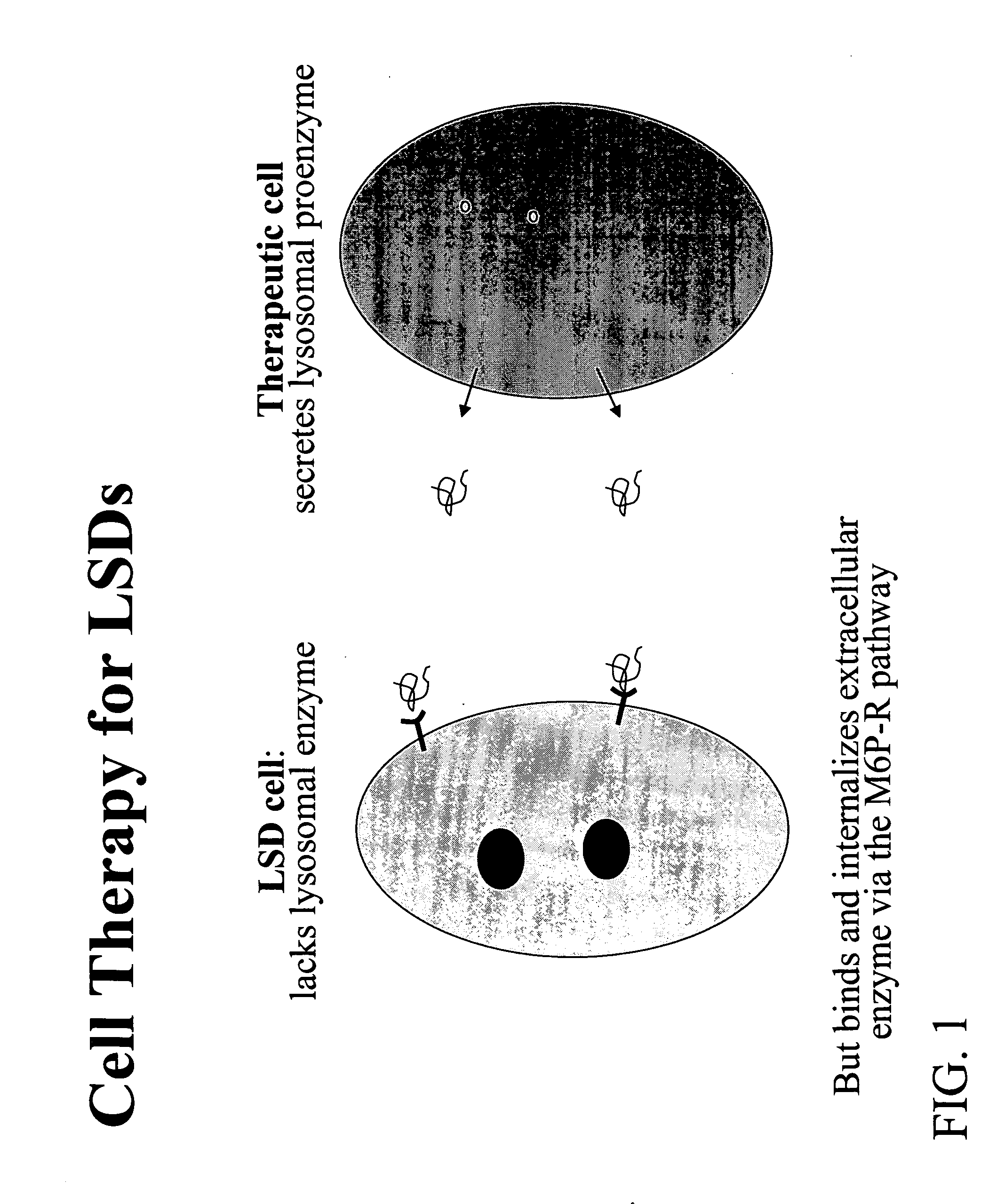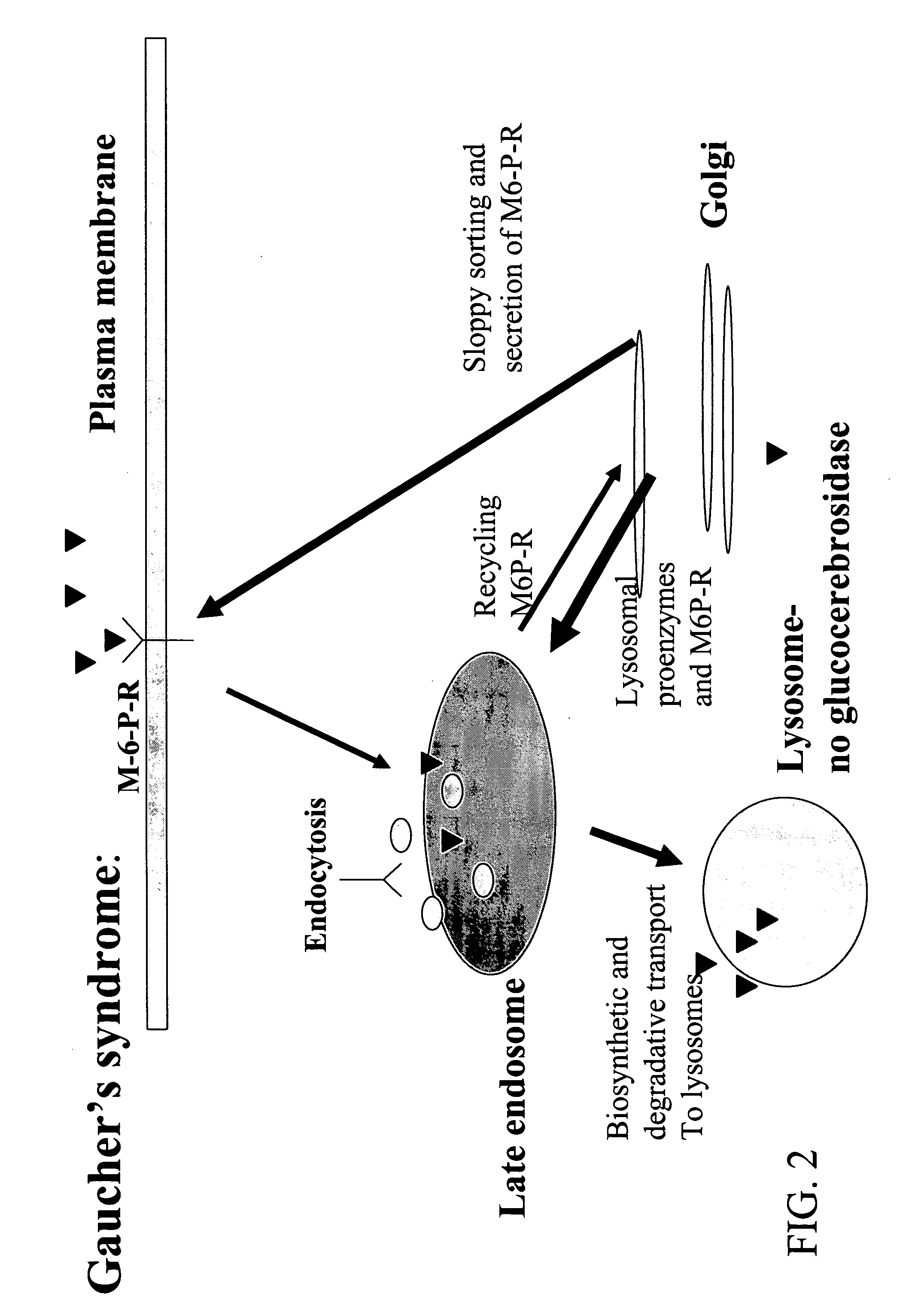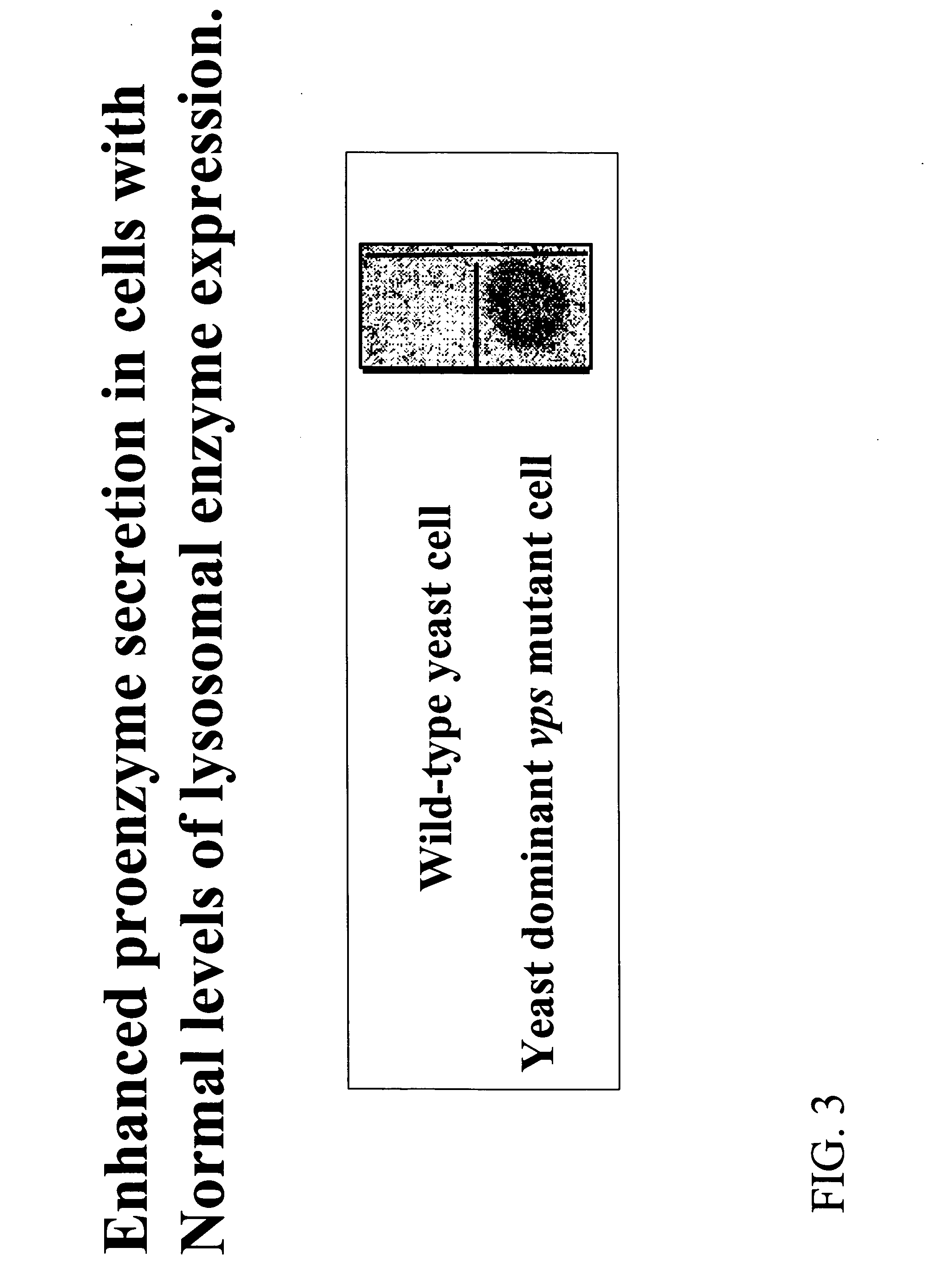Genetically modified somatic cells for sustained secretion of lysosomal proenzymes deficient in lysosomal storage disorders
- Summary
- Abstract
- Description
- Claims
- Application Information
AI Technical Summary
Benefits of technology
Problems solved by technology
Method used
Image
Examples
example 1
Human Vps4 Homologues
[0086] The mouse SKD1 is an AAA-type ATPase homologous to the yeast Vps4p, which is implicated in transport from endosomes to the vacuole (Yoshimori et al., 2000). Two human homologues of VPS4 have been identified, VPS4-A and VPS4-B (S. Scheuring et al., 2000). The human VPS4A and VPS4B proteins display a high degree of sequence identity (80%) between them and to the yeast Vps4 protein (59 and 60%, respectively).
[0087] VPS4A or VSP4B is amplified by RT-PCR using primers designed by reference to GenBank (accession number AF255952) and / or GeneCard™ accession numbers GC16P060030 (VPS4A) or GC18M060895 (VPS4B) (available through the Weizmann Institute of Science and online at rzpd.de / cards / ) and the cDNA product is isolated and cloned into a vector. If the PCR product is less than the full cDNA sequence, 5′ and / or 3′ RACE may be used to obtain the full length cDNA sequence. The sequence of the cDNA present in the vector is verified by sequencing the gene.
example 2
Therapeutic Cells Created by Homologous Recombination
[0088] A mutation is introduced into the human VPS4A or VPS4B gene to produce a dominant negative point mutation, for example, VPS4A (E228Q) and VPS4B (E235Q), which corresponds to the dominant negative single-point mutation Vps4p (E233Q) that is also equivalent to mouse SKD1 (E235Q) (Yoshimori et al., 2001; Scheuring et al., 2000). The point mutation is introduced by site directed mutagenesis. The dominant negative Vps4ApE228Q, Vps4BpE235Q, SKD1E235Q and scVps4pE233Q mutations, all reside within the ATPase module, common to members of the AAA-protein family. Id.
[0089] The dominant negative mutant, Vps4ApE228Q or Vps4BpE235Q, is cloned into an expression vector, whereby Vps4ApE228Q or Vps4BpE235Q is operably linked to a promoter (and optionally an enhancer element) and a poly A signal sequence. The promoter may be the promoter for the endogenous VPS4A or VPS4B genes or may be any appropriate promoter (see, FIGS. 4 through 10). A...
example 3
Therapeutic Cells are Expanded and Introduced into a Subject
[0092] The engineered cells are expanded and may be exposed to appropriate factors to induce differentiation. A sufficient number of engineered cells are grown and prepared for transplant. A subject, having an LSD, is sedated and the engineered cells are introduced into the subject. For example, the cells may be injected into the spinal chord, cranium or other tissue as appropriate (Kondziolka et al., 2000). The engineered cells introduced into a subject suffering from LSD, thereby treating the disease by secreting a functional proenzyme, which is taken up by the cells of the subject and transported to the lysosome.
PUM
| Property | Measurement | Unit |
|---|---|---|
| Acidity | aaaaa | aaaaa |
| Recombination enthalpy | aaaaa | aaaaa |
Abstract
Description
Claims
Application Information
 Login to View More
Login to View More - R&D
- Intellectual Property
- Life Sciences
- Materials
- Tech Scout
- Unparalleled Data Quality
- Higher Quality Content
- 60% Fewer Hallucinations
Browse by: Latest US Patents, China's latest patents, Technical Efficacy Thesaurus, Application Domain, Technology Topic, Popular Technical Reports.
© 2025 PatSnap. All rights reserved.Legal|Privacy policy|Modern Slavery Act Transparency Statement|Sitemap|About US| Contact US: help@patsnap.com



